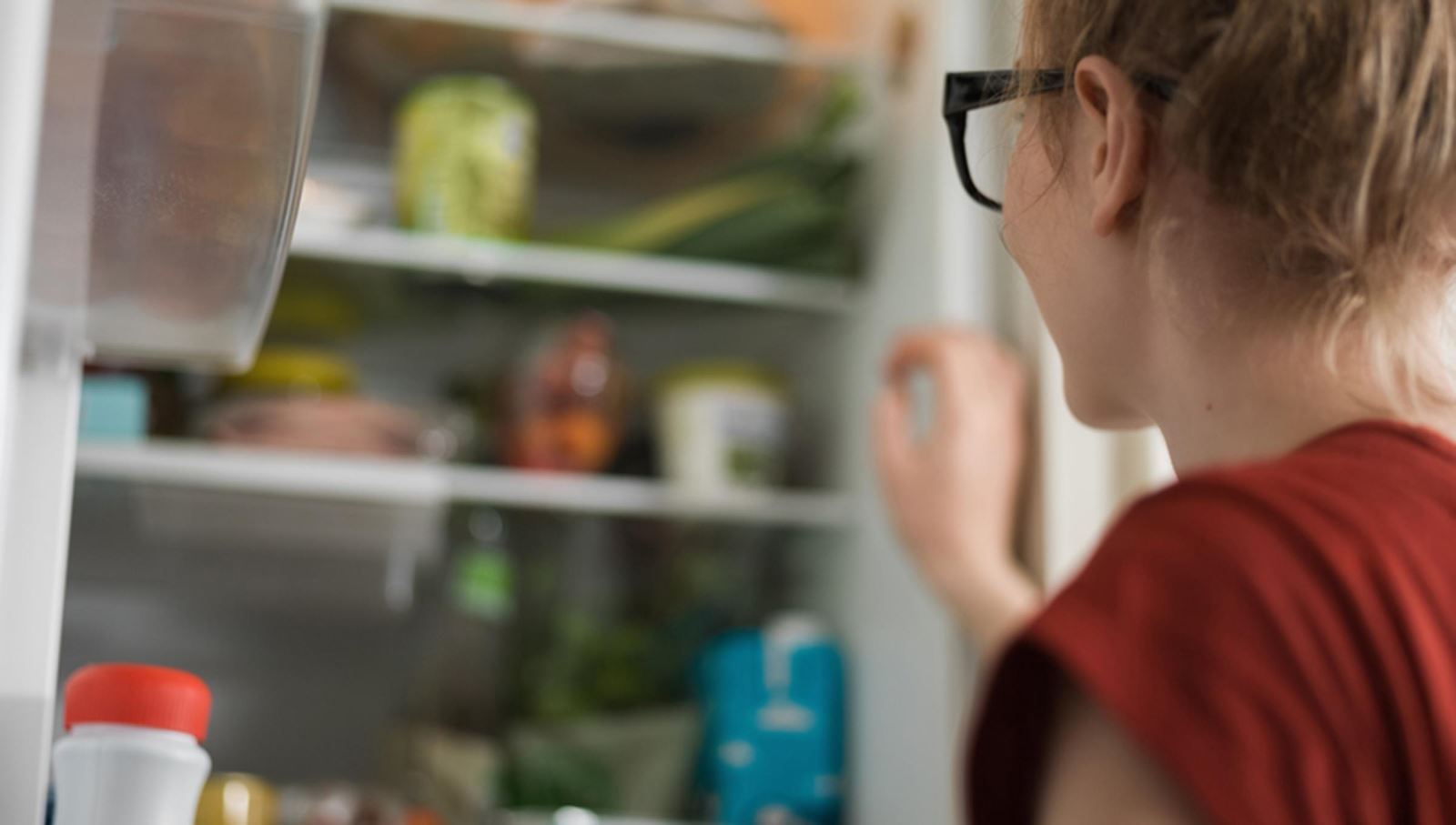10 ways to trick your brain into eating less
 |
This holds true for home and restaurants meals. But the fact we eat away from home so frequently plays a big role in American’s expanding waistlines. Americans (and people in most modern countries) all too often fill our diets with what scientists call “high energy density foods,” which represent items like fast food, fried dishes, and foods with empty calories and few nutrients like sodas, French fries and white breads or pastas.
The truth is that both children and adults will eat more when more becomes available — a phenomenon known as the “portion size effect.” Being aware of portion sizes and other environmental cues is important in fighting weight gain and the obesity epidemic.
Why? This might surprise you, but our internal sensors that tell us when we’ve had too much food we are, well … easily fooled. Particularly in the long-term, our appetite is influenced much more by external stimuli — what we see, taste, touch and smell — than it is by some internal mechanism. Of these senses, what we see on our plate is the most powerful factor in how much we’ll actually end up eating.
Trick Your Brain Into Wanting Less: 10 Tricks!
What’s the best way to retrain your brain into eating less food — or eating more of the nutrient-dense, low-calorie foods that contribute to a healthy body? I’ve included several specific tips below, but it all comes down to mindful eating. If you want to decrease how much you eat, you’’ll need to begin with intentionality, which will take time and effort.
1. Pay Attention to Portions
Okay, it probably sounds too simple, but the number one way to eat less is to … eat less! Don’t trust yourself to free-feed/self-serve and control portions without knowing the appropriate size first. Particularly when making food at home, eating at buffets or continental breakfasts and when serving your kids, look at packages or do a quick online search for the appropriate serving size. If a serving is one-third of a package, don’t eat the whole thing.
Adults and children will both eat more when more food is in front of them — this is one way your body is pretty bad at self-regulating. And guess what — this is true sometimes even if the food doesn’t taste great.
Because restaurants can make this very difficult, I suggest starting a meal by using my next tip…
2. Look at the Nutrition Facts
Restaurants can actually decrease how much diners eat by including the calorie count of each meal on the menu. This impact is most drastic when a daily calorie suggestion (typically 2,000 calories/day) is listed on the menu.
People who are already overweight statistically underestimate how many calories are found in larger meals, especially when it comes to fast food (which you should avoid anyway).
Don’t see it on the menu? Google it. Most major restaurants have nutrition facts available online or can provide it when asked.
If a meal where you’re eating contains a huge amount of calories (usually, a red flag goes up for me when I see a number over 700 to 800 in one meal), decide before you start eating to do some portion control. Ask for a to-go box and portion out a third to a half of your meal before you start eating to remove the visual cue of more food.
When grocery shopping, reading nutrition fact labels is one major way to not only avoid exceptionally high-calorie foods, but also to make sure you’re avoiding the worst ingredients found in many foods.
 |
3. Eat in Bright Areas
Candlelit dinners might be romantic, but they’re also probably more calorie-rich. In one trial, subjects were asked to eat in total darkness. Compared to the group who ate in the light, those in darkness consumed 36 percent more food — and they had no physical indication that they were more full or shouldn’t order dessert.
Instead of finding yourself in a dark room in front of your TV, try practicing mindful eating by sitting at a table in the light and focusing on your meal, then doing entertainment later. If you’re in a dark restaurant, don’t become lax with figuring out the true serving size for what you’re eating.
4. Snack Thoughtfully
People tend to trust packaging, which is usually not a bad thing. However, a lot of snacks are “inpidually sized” in larger-than-necessary serving sizes. You’ll probably eat more of the same snack if a “single serving” is increased in size and served in a bigger container.
This is due to something called “unit bias” — our brains see one inpidual thing as the same density, even if one is smaller. Offered five mini pretzels or five normal-sized pretzels, a person will probably eat the entire serving of both, which means people eating the larger pretzels consume more calories.
When considering snacks, don’t let your brain fool you. Take the time to count out a single serving and avoid eating out of large containers like a chip bag.
This leads me to recommend…
5. Start Meal Planning
Putting a single serving of a snack into a snack baggie is a great way to control the portion sizes you consume, but this isn’t limited only to snacks. When you take the time to meal plan and prep in bulk, you can much more easily stop yourself from overeating.
By meal planning, you can go ahead and clean your plate, like Mom always told you to do. Typically, people decide to finish the entire meal in front of them before taking the first bite — by having meals ready ahead of time, you practice time-delayed eating and reduce the total amount of food you eat.
 |
6. Eat a High-Protein Snack Before Going Out
Appetizers may not be such a bad idea, after all. When you eat something small before a full meal, you may be able to decrease how much you want to eat when at the main event. This is particularly true when the “pre-meal” includes a lot of protein.
High-protein snacks that might be great to have around, especially if you’re going to a restaurant that offers massive-calorie meals, include things like protein bars, black bean brownies, chia pudding and guacamole-stuffed eggs.
7. Add More Veggies — And Eat Them First
Want to trick your brain into eating more of the good stuff? Add healthy vegetables to your plate in large quantities and start with those. You may not actually reduce how much you eat of the rest of your food, but you’ll eat more of the healthiest items on your plate by simply serving them and eating them first. This holds true with both children and adults.
8. Put Refills and Seconds Out of Arm’s Reach
I’m not calling you lazy, I promise. However, if you put the seconds on the stove rather than on the table, you’ll eat less. One study found a 35 percent decreased intake when food was out of arm’s reach. There was a slightly stronger impact on men.
9. Be Wary of Labeling Bias
Did you know that something labeled “organic” doesn’t mean it’s necessarily low-calorie or even healthy? I highly recommend going for organic whenever you can to avoid dangerous chemicals like Monsanto Roundup; however, it’s easy to let an organic label confuse you. For example, organic cookies are still likely full of sugar.
In one study, researchers found people not only ate more things labeled organic (regardless of health status of the food), but many subjects would even forgo their other efforts to lose weight, such as exercising, after eating something organic.
Don’t let labeling bias fool you — train your brain to be aware of the actual nutritional content of foods, even when they’re organic. Keep reaping the benefits of exercise and other healthy lifestyle practices, too.
10. Use Smaller Plates and Dinnerware
You may have seen this recommendation before, but one easy way to eat less is to use a smaller plate and smaller dinnerware. You simply can’t fit the same amount of food on a small plate as you can a large one, and your brain is happier to see a “full” plate, even if it actually has less calories on it.
Between the 1980s and 2000s, the size of the average dinner plate in the United States went up by an astounding 44 percent, which indicates we’ve become accustomed to larger serving sizes overall.
In one study, less than half of the people served the same food on various dishware even noticed the dishware size differed at all. In another trial, subjects ate more of a snack food when self-serving if the spoon was larger. You’re also more likely to drink more of a beverage from a tall container than a short, wide one.
So, this one is simple — be aware of the size of the plates, cups and dinnerware you’re using, and adjust accordingly (and implement the other tips above) to keep from overeating.
 |
Precautions on Portion Sizes
I am not typically a fan of calorie-counting because I think it forces you to focus on the wrong thing. Eating nutrient-dense foods is far more important than just knowing you had 1,839 calories in a day. However, there are concerns that arise with portion sizes and the way they may be impacting the obesity epidemic, especially when we’re talking about high-calorie, nutrient-deficient foods.
Instead of being calorie-obsessed, your focus should stay on eating the most nutrient-dense foods you can while also being mindful of your intake.
In addition, there has been some controversy surrounding the work of Professor Brian Wansink of Cornell University, who has conducted a lot of research around the psychology of eating and portion sizes. Some of his studies have been retracted due to shoddy research practices, while others have been upheld. I have not included any retracted studies throughout this article./.
( Rebekah Edwards )
Recommended
 Handbook
Handbook
Vietnam Moves Up 8 Places In World Happiness Index
 Handbook
Handbook
Travelling Vietnam Through French Artist's Children Book
 Multimedia
Multimedia
Vietnamese Turmeric Fish among Best Asian Dishes: TasteAtlas
 Handbook
Handbook
From Lost to Found: German Tourist Thanks Vietnamese Police for Returning His Bag
Popular article
 Handbook
Handbook
Prediction and Resolution for the Disasters of Humanity
 Handbook
Handbook
16 French Films To Be Shown For Free During Tet Holiday In Vietnam
 Handbook
Handbook
Unique Cultural and Religious Activities to Welcome Year of the Snake
 Handbook
Handbook



